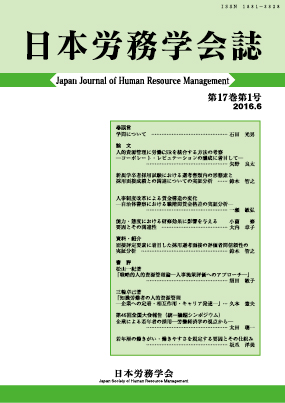The Japanese labor system is changing from an internal labor market to an internal-external eclectic labor market. Under the internal labor market system in Japan, Japanese companies have had the strong management prerogative over human resources and control their labor force through “the right person in the right place policy”. Meanwhile, employees have been seeking job security as compensation for accepting the management prerogative to human resources.
In line with the change in the Japanese labor market, the concept of a right to career has been suggested. This right emphasizes a career itself rather than job security. The core concept of the right to career is learning rights; therefore, it is believed that the right to career develops the general skills of employees.
The present study interviewed 25 white-collar employees with career satisfaction and 10 career advisors who work for employment agencies. The major findings were as follows.
(1)The combined effect of the management prerogative over human resources and the right to career contributes to the development of specialized skills for employees. With regard to new employees, the effect of the management prerogative to human resources is greater than that of the right to career. After employees have developed specialized skills, the effect of the management prerogative over human resources decreases and that of the right to career increases.
(2)Employees recognize their area of specialization as a core element of employability. Therefore, it can be assumed that employees consider their area of specialization to be skills they have acquired by developing their general skills. However, in reality, their specialized skills are a combination of both company-specific skills and general skills.
(3)It is suggested that employees cannot develop their careers in an effective manner without the combined effect of the management prerogative over human resources and the right to career.
The implications of the present study are as follows:
(1)Employees should recognize the combined effect of the management prerogative over human resources and the right to career and avoid underinvestment in skills through the management prerogative to human resources.
(2)On the whole, the right to career appears to be compatible with the management prerogative over human resources. At the same time, companies should seek a balance between the two. Specifically, companies should focus on the exercise of the management prerogative to human resources in the case of new employees. After employees have developed specialized skills, companies should turn their attention to the exercise of the right to career.
View full abstract
